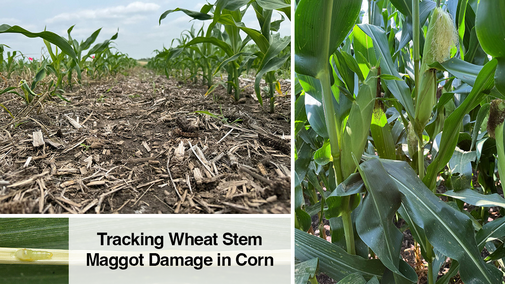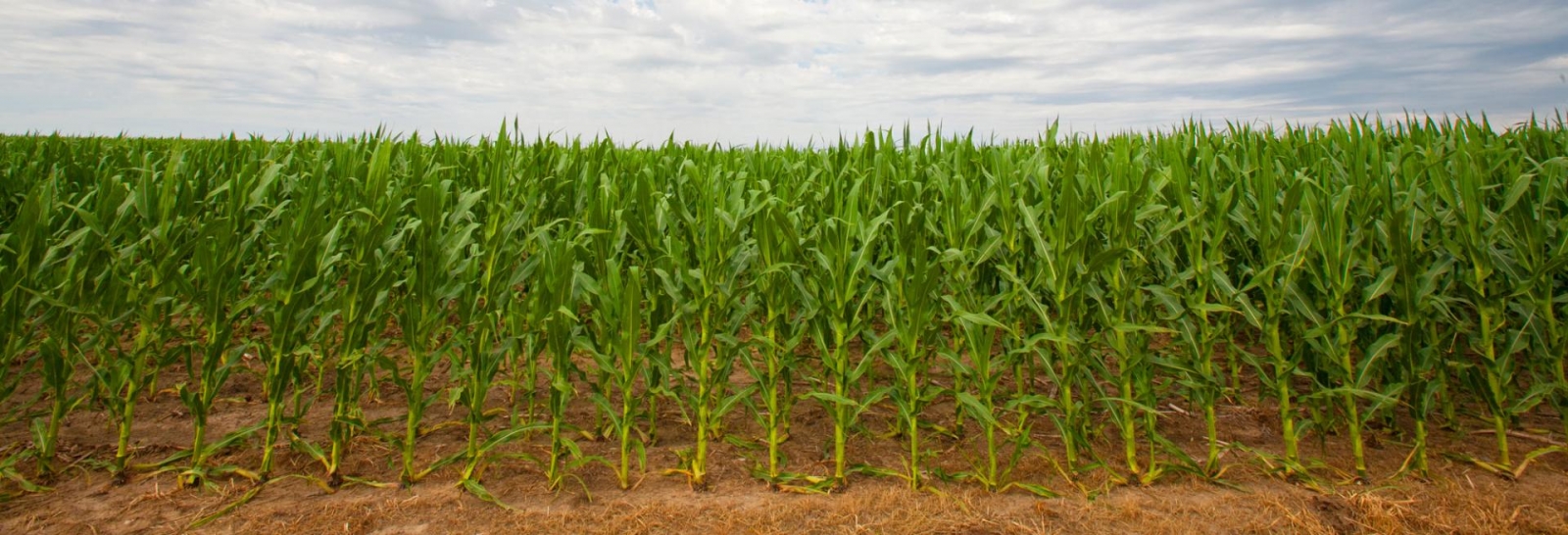In late May through early June, we received several reports of wheat stem maggot feeding on corn planted after cover crops in south-, central-, and eastern Nebraska. A summary of those initial reports was published in a June 12 CropWatch article.
A silver lining to this issue was that one of our cornfields at the Eastern Nebraska Research, Education and Extension Center (ENREEC) experienced wheat stem maggot injury, allowing us to collect detailed observations. We tagged 100 plants and recorded:
- Plant injury category
- Plant height
- Number of tillers
- Presence of adjacent plant injury
- Whether plants were tied or wrapped
In August, we returned to the same plants to record the presence and development of corn ears. These observations will help us better understand how early-season injury from wheat stem maggot influences plant recovery and yield potential.
What We Saw at ENREEC
- Healthy plants — All corn plants with no visible wheat stem maggot injury in June went on to develop normal ears by August.
- Light injury — Plants with only a small amount of leaf feeding were about 21% shorter than “Healthy plants” in June.
- 20% had tillers that produced ears, though the tillers were very small (less than 3 inches).
- 5% of ears showed delayed development, where green silks were still present while normal plants already had brown silks.

- Moderate injury — Plants about half the normal height of healthy plants in June with heavy whorl damage:
- 68% produced an ear, but 80% of those ears were delayed in development.
- Tillers on these plants were about half the height of the main stem.
- Severe injury — Plants only one-quarter of a healthy plants height in June:
- 25% produced an ear, and all were delayed in ear development.
- Tillers on these plants were actually slightly taller than the main stem.
- Extreme injury — Plants with the main stem almost completely destroyed (about 94% shorter than healthy plants):
- 97% produced tillers about half the height of a healthy plant.
- Only half of these plants made an ear, and nearly all of those ears were behind in development.
We will be taking yield on these plants as well as the adjacent plants at the end of the season to determine yield impacts by injury level and the potential for compensation by adjacent plants.

